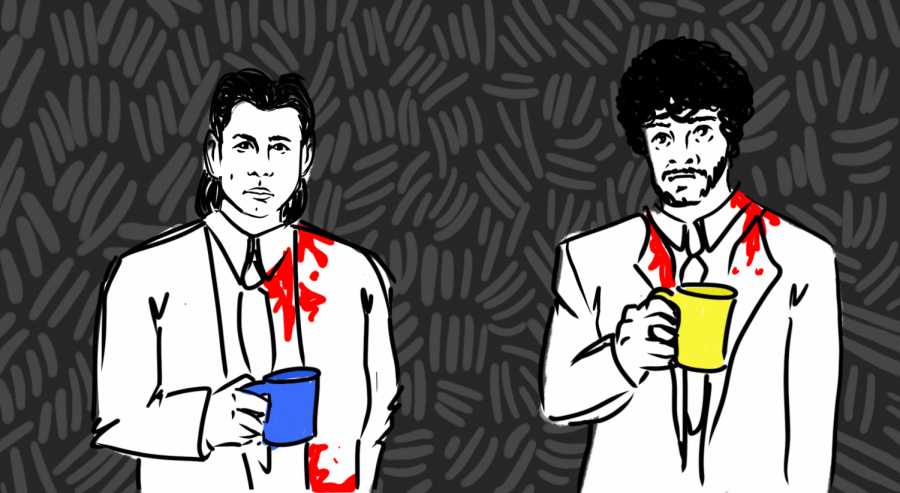Quentin Tarantino: The Man vs. His Art
October 5, 2019
Quentin Tarantino. The name holds some weight. Tarantino is a critically acclaimed director, writer, and producer who has written and directed ten major films, arguably all of which became cult classics. His third film, which made him a household name and precipitated his rise into A-list levels of fame, was Pulp Fiction. This masterpiece starred John Travolta, Uma Thurman, and Samuel L. Jackson. The movie created a name for the latter two actors and brought the former back into the spotlight and out of obscurity. Other works of Tarantino’s include Reservoir Dogs, the Kill Bill duology, and Django Unchained. His work was incredibly novel and ahead of its time, and all of these movies have been majorly successful. Even Reservoir Dogs, his first film, did extremely well despite not hitting Pulp Fiction-levels of fame. Neither has Tarantino’s success diminished as time has passed. In recent years, there has been a surge of attention towards some of his older work, Pulp Fiction in particular, as enough time has passed for these films to exhibit vintage aesthetics.
It’s an exercise in film study and psychology to pinpoint what makes Tarantino’s work so consistently compelling. The soundtracks, of course, play a major role, as do the casting choices, but many movies that star famous, attractive actors and have great backing music do not amass as devoted a cult following as Tarantino’s films do. Aside from the careful craft of his movies, what makes Tarantino so successful is his ability to co-opt a different subset of the film-viewing audience than many filmmakers can.
The gory, druggy shots of his movies are interspersed with sharp dialogue and the existential thoughts of a person on a roof late at night. These thoughts are usually then presented, using varying levels of colorful language, by a morally ambiguous antihero who lacks conventional heroic characteristics. This alternative edge draws in the types of people who think of themselves as different and who think many mainstream movies and directors are are too conventional and therefore unappealing.
The love of Tarantino, for this particular brand of viewers, can turn quickly into feral worship. Go to any negative review of Tarantino’s work, or the director himself, and you’ll likely find at least one or two acrid, condescending comments directed at the author left by avid Tarantino fans.
In fact, this vicious idealization may have spared Tarantino from some of the grief he should be receiving. In recent years, within the context of the #MeToo movement, Tarantino has been accused of requiring actors to perform violent stunts that put their safety at risk. He is also very closely linked to the known sexual predator Harvey Weinstein, who was the distributor and producer of several of his movies. Tarantino even admitted, with regret, to knowing about some of Weinstein’s assault incidents and not saying anything and to dismissing actors if they came to him with complaints. Despite this, Tarantino has not faced too much damage—his most recent movie, Once Upon a Time in Hollywood, has made $285 million since coming out just a little under two months ago, and his name is still very much a renowned one. This brings up a few questions: Where, in Hollywood today, do we draw the line where we stop supporting morally indecent people through patronage? And what, if anything, does it mean that the audience Tarantino’s movies attract chooses to gloss over his failures and continue to admire him? These questions are not easy ones to answer. The most that we can do is research and acknowledge mistakes (as Tarantino has done of his own) and try to navigate our own morals.
Tarantino creates beautiful films in essence and in story, and that fact can be celebrated regardless of the stigma that seems to attach to many Hollywood names today, but it is important to stay aware of artists’ actions as well as consuming their art.
This piece also appears in our September 2019 print edition.











